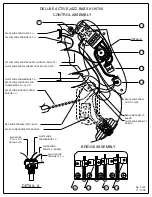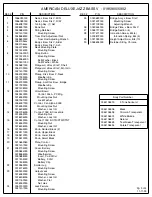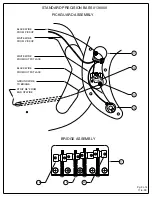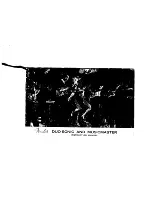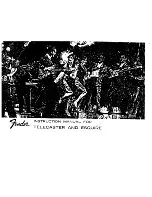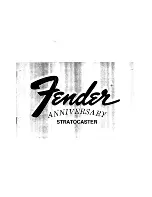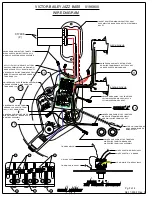
©2014, Rockler Woodworking and Hardware
Page 11
Place
the
bridge
in
the
proper
location
and
hold
it
firmly
in
place
with
one
hand
and
while
using
the
other
hand
to
scribe
a
line
all
around
the
bridge
using
a
razor
knife.
Don’t
let
the
bridge
slip
while
doing
this
and
be
careful
not
to
accidentally
cut
the
bridge.
The
purpose
of
scribing
the
line
is
to
mark
the
area
of
the
guitar
top
where
clear
coat
must
be
removed
so
a
glue
bond
can
be
achieved
on
the
bridge
‐
body
joint.
Once
the
line
is
scribed,
remove
the
bridge
and
prepare
to
remove
the
finish
inside
the
scribe
line
where
the
bridge
will
be
glued.
Follow
the
process
described
in
“Glue
the
Neck
to
the
Body”
—
mask,
scrape,
sand.
Once
the
finish
is
removed,
reposition
the
bridge
on
the
guitar
and
do
a
dry
run
of
the
clamp
setup.
Ideally,
2–3
clamps
should
be
used,
reaching
inside
the
body
to
the
bridge
patch—
a
piece
of
wood
inside
the
guitar
body
directly
below
where
the
bridge
will
be
located.
A
wooden
caul
might
be
needed
between
the
clamp
and
the
bridge
patch
to
allow
the
clamps
to
extend
over
the
bracing
inside
the
body.
Be
sure
to
use
padding
on
top
of
the
bridge
to
prevent
the
clamps
from
damaging
the
bridge.
If
clamps
are
not
available
that
will
reach
inside
the
guitar
soundhole
to
the
bridge,
another
option
might
be
to
use
something
stiff,
like
a
wooden
straightedge
or
a
piece
of
wood.
Lay
the
straightedge
or
wood
across
the
bridge
and
then
clamp
it
to
the
sides
of
the
guitar.
Again,
use
padding
to
prevent
damage
to
the
bridge
and
guitar
body.
Just
be
careful
not
to
apply
so
much
pressure
that
the
top
of
the
guitar
is
deformed.
Once
you’re
happy
with
your
clamping
setup,
remove
the
clamps
and
lightly
sand
the
bottom
of
the
bridge
with
100
‐
grit
sandpaper
to
help
the
glue
adhere.
Now
glue
the
bridge
to
the
body
with
Titebond
using
the
same
clamp
setup
as
practiced
earlier.
Use
a
damp
cloth
to
wipe
away
any
excess
glue.
If
there
is
a
lot
of
glue
excess
glue
it
may
be
difficult
to
see
the
scribe
line
marking
the
bridge
location.
A
few
Figure
10:
Preparing
and
Clamping
the
Bridge
to
the
Body

















